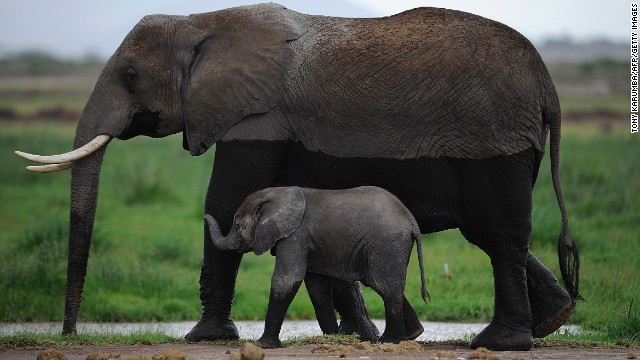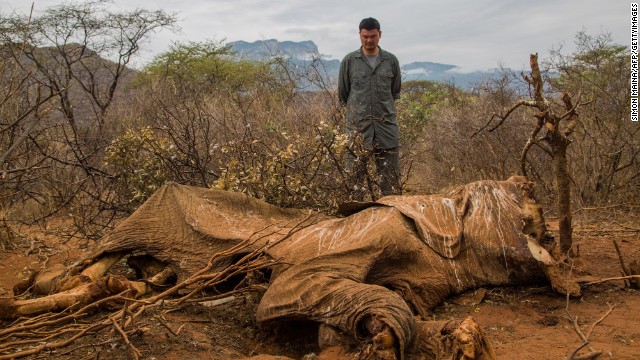The Slaughter of Elephants
"Vicious poaching for bush-meat is experienced in both protected and non-protected areas throughout the range lands. All species of wildlife are harvested indiscriminately using snares,bows and arrows, spears, clubbing and occasionally firearms. This practice is unsustainable and could lead to extermination of many species."
Lifting the Siege: securing Kenya's wildlife, task force report on wildlife security
"It gives us real insight into their day-today behaviour. At any given point they fire up Google Earth and check on the latest locations of the elephants and what they're doing. We can look for behaviour such as an elephant that starts slowing down because it becomes injured or sick. We're also very concerned with elephant poaching for ivory, so one of the algorithms I designed looks at whether an animal has stopped moving for a given period of time, which would signal that the animal has been killed."
Jake Wall, PhD student, University of British Columbia geography department
 |
| Ivory's tragic price |
As though slaughtering elephants to supply the illegal and hideous trade in ivory isn't bad enough, subsistence bush meat poaching appears to have soared to dangerously emergency levels, making the growth of the commercial bush meat trade a multi-million shilling industry in Kenya. A month ago there were reports that a 45-year-old behemoth of a bull elephant known by name as Satao, had been slaughtered in the huge Kenyan Tsavo National Park, an important wildlife preserve.
Satao's death came from poisoned arrows. His face so dreadfully mutilated he was identified by measuring his ears because where his tusks once appeared on his massive face, tusks so large they touched the ground, only two massive holes were left. "Satao is dead, killed by an ivory's poacher's poisoned arrow to feed the seemingly insatiable demand for ivory in far-off countries. A great life lost so that someone far away can have a trinket on their mantlepiece", mourned the Tsavo Trust.
"When he was alive, his enormous tusks were easily identifiable, even from the air."

Now, there is a new tool that can be used to track the movement and activities of elephants by rangers, researchers and conservationists throughout South Africa and northern Kenya in their battle to combat poaching. Jake Wall, who works for the conservation group Save the Elephants has helped to fit almost one hundred elephants with GPS satellite-tracking collars. He designed software algorithms to survey live data and reveal patterns, alerting rangers to deviations from familiar patterns.
This is an advance from the satellites that have been used for decades to track the movement of elephants. The new system gives rangers a heads-up, along with researchers and conservationists, enabling them to be more effective in their management and protection of elephant herds. The live feed opens an avenue into the movement of the elephants, their interactions and allied behaviours to help conserve their lives, endangered by the illegal ivory trade.
Armed groups of poachers are anxious to cash in on the increasing value of ivory, trading their tusks for arms and ammunition. The largest market for illegal ivory is China, along with other Asian nations like Thailand, the Philippines and Vietnam. The surge in trade has resulted in the deaths of an estimated annual 30,000 elephants to feed this market, placing at dangerous risk fragile animal populations in Africa. The tusks are in huge demand, selling for thousands of dollars, encouraging the lucrative and brutal trade.
"The surge in the killing of elephants in Africa and the illegal taking of other listed species globally threatens not only wildlife populations but the livelihood of millions who depend on tourism for a living", explained Achim Steiner, executive director of the United Nations environment program.
Labels: Africa, Animal Welfare, Crime, Kenya

0 Comments:
Post a Comment
<< Home